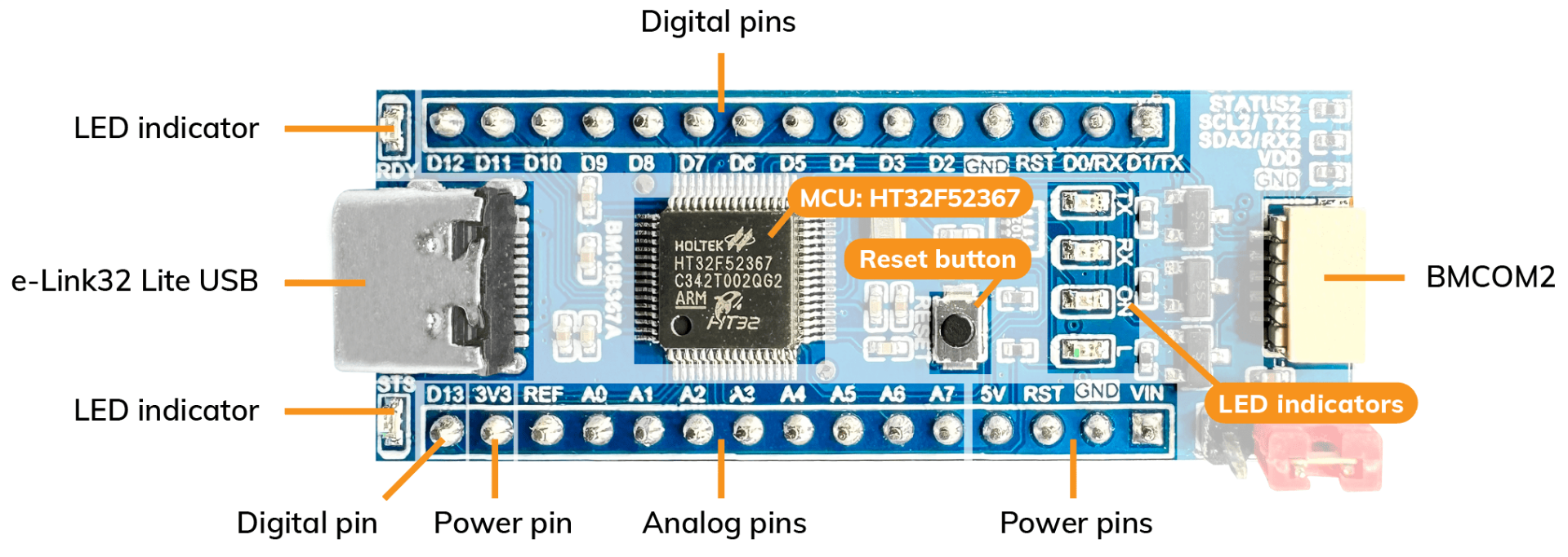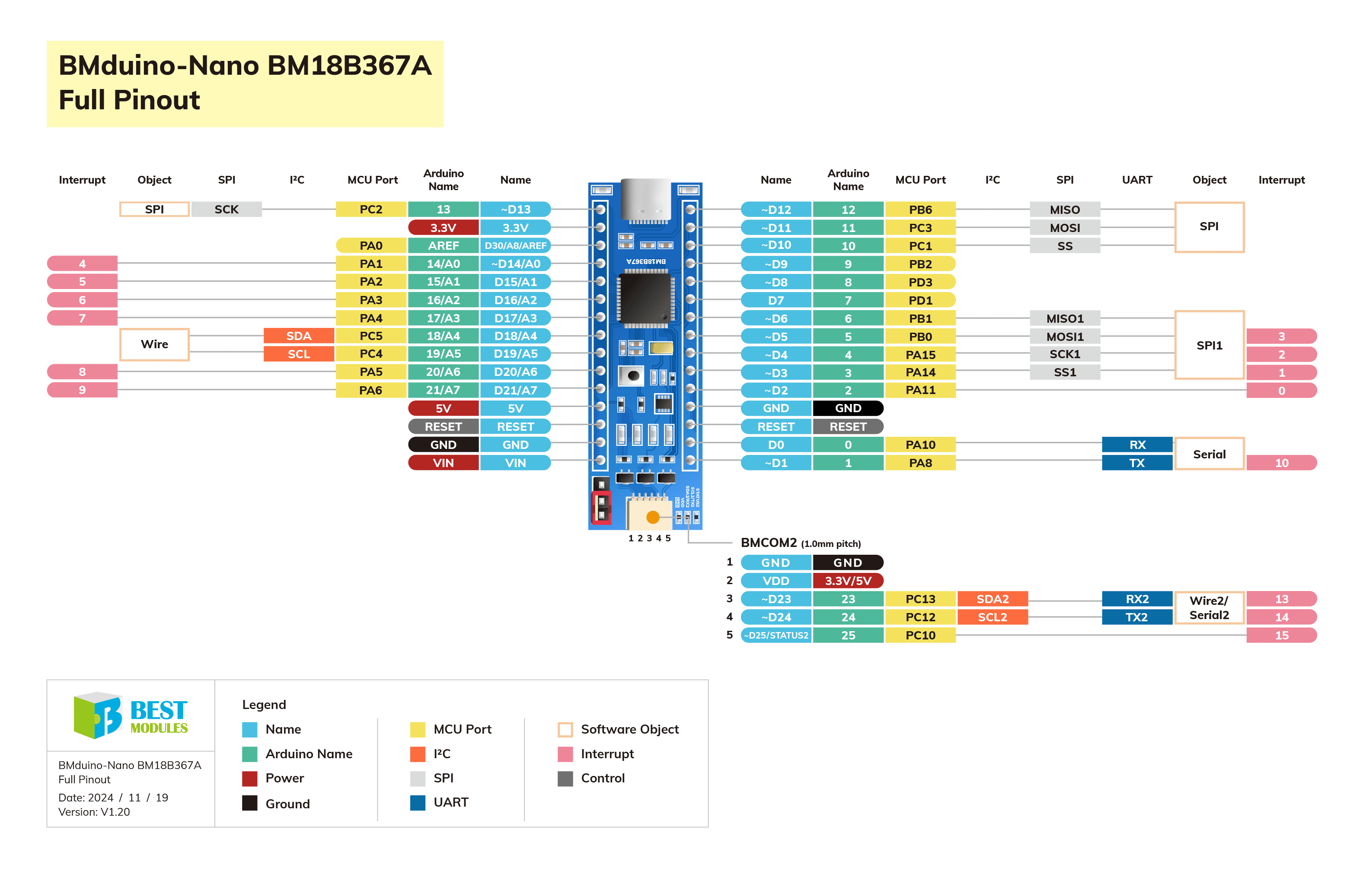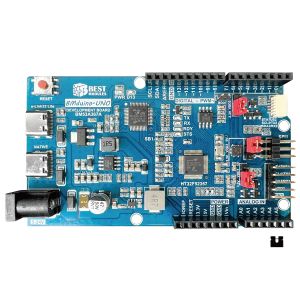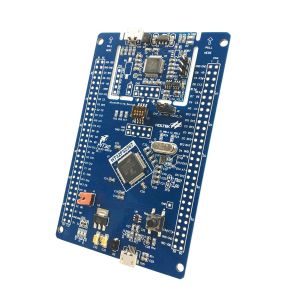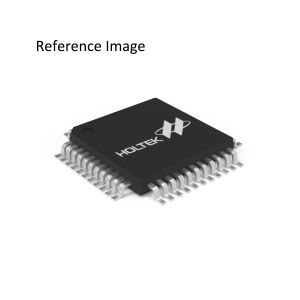The product uses the HT32F52367 as its main MCU, which is a 3.3V series Cortex®-M0+ core that supports various power supply methods and has additional commonly used communication interfaces such as I2C, SPI, and UART.
Pin-compatible with Arduino Nano
The product is pin-compatible with Arduino Nano operates at a voltage level of 3.3V (while Arduino Nano operates at 5V).
In addition to the standard Arduino Nano pinout, the product provides an additional connector, BMCOM2, which can be individually set to operate at either 3.3V or 5V using jumpers.
The product comes with a voltage level shift circuit so that you can directly connect to BMCOM2 when using a 5V voltage module, without worrying about voltage conversion.
Programming
The product comes with an e-Link32 Lite circuit, which can be used for debugging and programming.
Therefore, it does not need to use TX and RX pins when uploading a sketch (Arduino Nano needs to use them) and does not need the ICSP function.
The 6-pin ICSP connector on the Arduino Nano is designed to be the BMCOM2 connector on the product, and its voltage level can also be set to 3.3V or 5V with a jumper, and no additional voltage level shift circuit is required when connecting to a 5V module.
Development environment
In addition to working in the Arduino IDE, the product can also work in the Keil IDE development environment, and its usage is the same as that of the ESK32-30510 HT32F52367 starter kit.
What is BMCOM?
BMCOM is an ecosystem consisting of I2C/UART modules, which includes sensors, actuators, displays, and wireless modules, that can accelerate the process of prototype design.
There are two types of BMCOM connectors: BMCOM1 is a 2.54mm pitch, 5-pin header, while BMCOM2 is a 1mm pitch, 5-pin JST connector.
Due to its small size, the BMduino-Nano BM18B367A only includes the BMCOM2 connector, while the BMduino-UNO BM53A367A is equipped with both connectors.
BMduino-UNO v.s. BMduino-Nano
The product offers similar functionality to the BMduino-UNO BM53A367A. However, it stands out with its smaller size and can be directly inserted into a breadboard. This makes it ideal for space-constrained applications. You can select the appropriate development board based on your product's size requirements.


